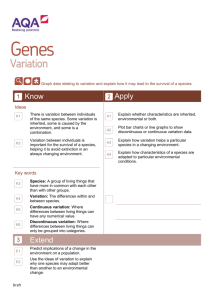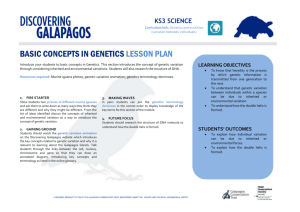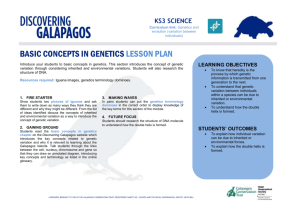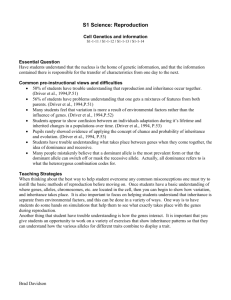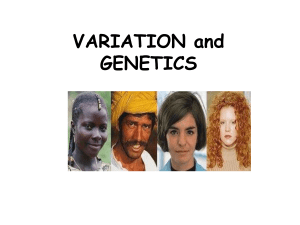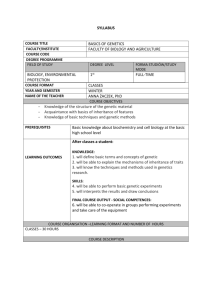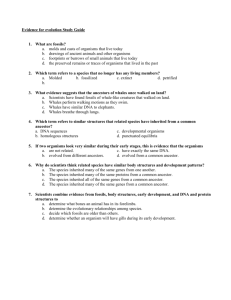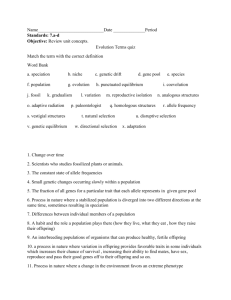6.1 Variation notes
advertisement
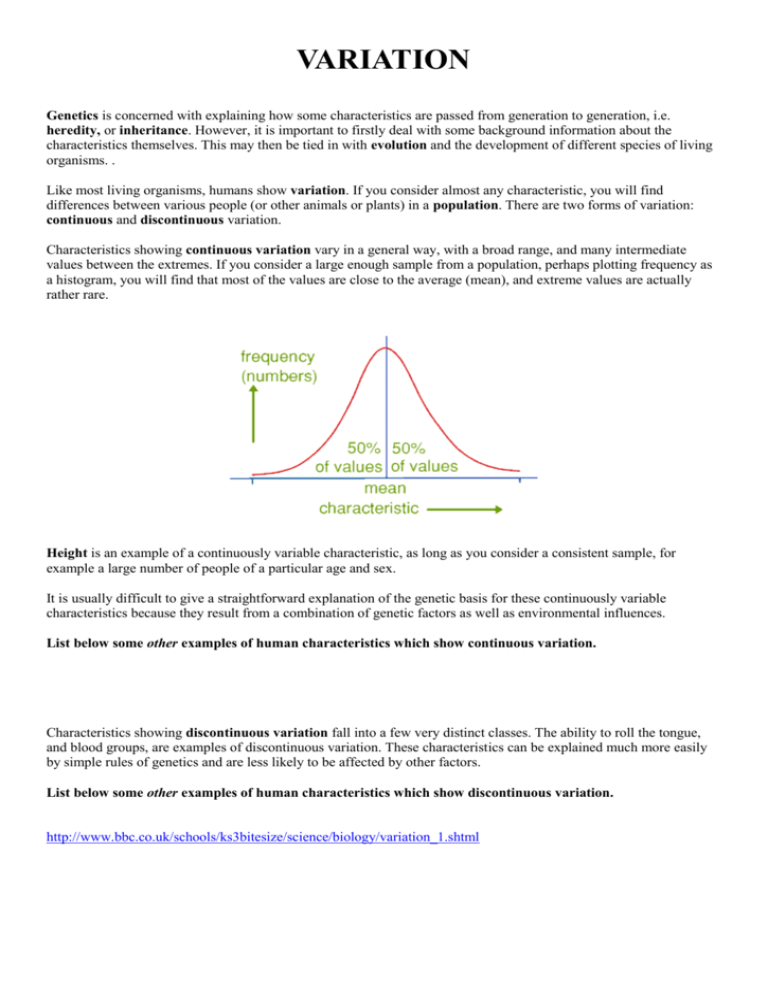
VARIATION Genetics is concerned with explaining how some characteristics are passed from generation to generation, i.e. heredity, or inheritance. However, it is important to firstly deal with some background information about the characteristics themselves. This may then be tied in with evolution and the development of different species of living organisms. . Like most living organisms, humans show variation. If you consider almost any characteristic, you will find differences between various people (or other animals or plants) in a population. There are two forms of variation: continuous and discontinuous variation. Characteristics showing continuous variation vary in a general way, with a broad range, and many intermediate values between the extremes. If you consider a large enough sample from a population, perhaps plotting frequency as a histogram, you will find that most of the values are close to the average (mean), and extreme values are actually rather rare. Height is an example of a continuously variable characteristic, as long as you consider a consistent sample, for example a large number of people of a particular age and sex. It is usually difficult to give a straightforward explanation of the genetic basis for these continuously variable characteristics because they result from a combination of genetic factors as well as environmental influences. List below some other examples of human characteristics which show continuous variation. Characteristics showing discontinuous variation fall into a few very distinct classes. The ability to roll the tongue, and blood groups, are examples of discontinuous variation. These characteristics can be explained much more easily by simple rules of genetics and are less likely to be affected by other factors. List below some other examples of human characteristics which show discontinuous variation. http://www.bbc.co.uk/schools/ks3bitesize/science/biology/variation_1.shtml Causes of variation Some of the characteristics possessed by an individual in a population can be said to be inherited - i.e. derived from the previous generation. These characteristics are passed on, in a fairly predictable way, as a result of sexual reproduction. Sexual reproduction also introduces an element of randomness, so that variation is brought about in a population. These two almost contradictory factors - dependable inheritance of characteristics from parents, and variation within the population - are essential to an understanding of the process of evolution. Give some examples of characteristics which may be inherited by a child from his or her parents. It is certainly too simplistic to imply that characteristics like facial features of children can merely be attributed to parents by looking at them, without knowing the background of previous generations. The examples often chosen give the impression that inheritance covers only trivial features, such as the shape of the human chin, or ear-lobes. However, an extremely wide range of characteristics are known to be passed on in this way. In fact, practically every aspect of normal human body functioning is under hereditary (genetic) control, because there are many examples of fairly rare "conditions" (diseases which cannot be transmitted from one person to the next, but which are caused by defective functioning of certain cells) which can be inherited in exactly the same way as hair or eye colour. These inherited forms of disease" may also be called inborn errors of metabolism. See if you can find some examples of these inherited human conditions which may be passed from one generation to the next. Other characteristics are said to be acquired during life (non-inherited). These may also be said to be caused by environmental effects. Give some examples of acquired human characteristics. It must also be said that some characteristics probably have both an inherited and an environmental basis, such as I.Q. - intelligence quotient. The balance between them is the answer to the "nature versus nurture" question. Similar considerations apply in all living organisms; for example different plants grown in different conditions of light or temperature may show differences in growth rate and vigour, and understanding the causes of this variation is quite fundamental in controlling or increasing agricultural and horticultural productivity. From an experimental point of view, how may the effects of these environmental factors be shown, as distinct from effects due to different genetic make-up of the plant in question?
